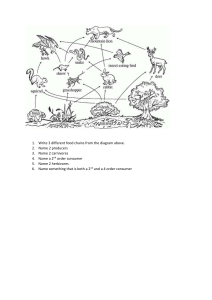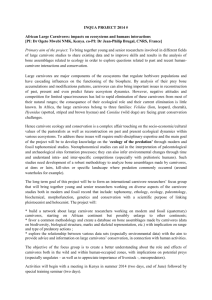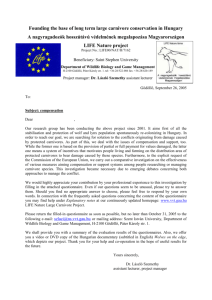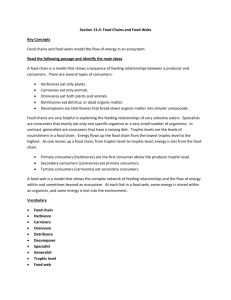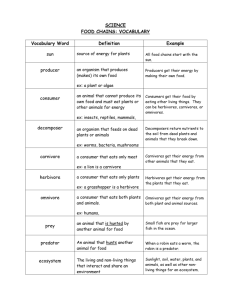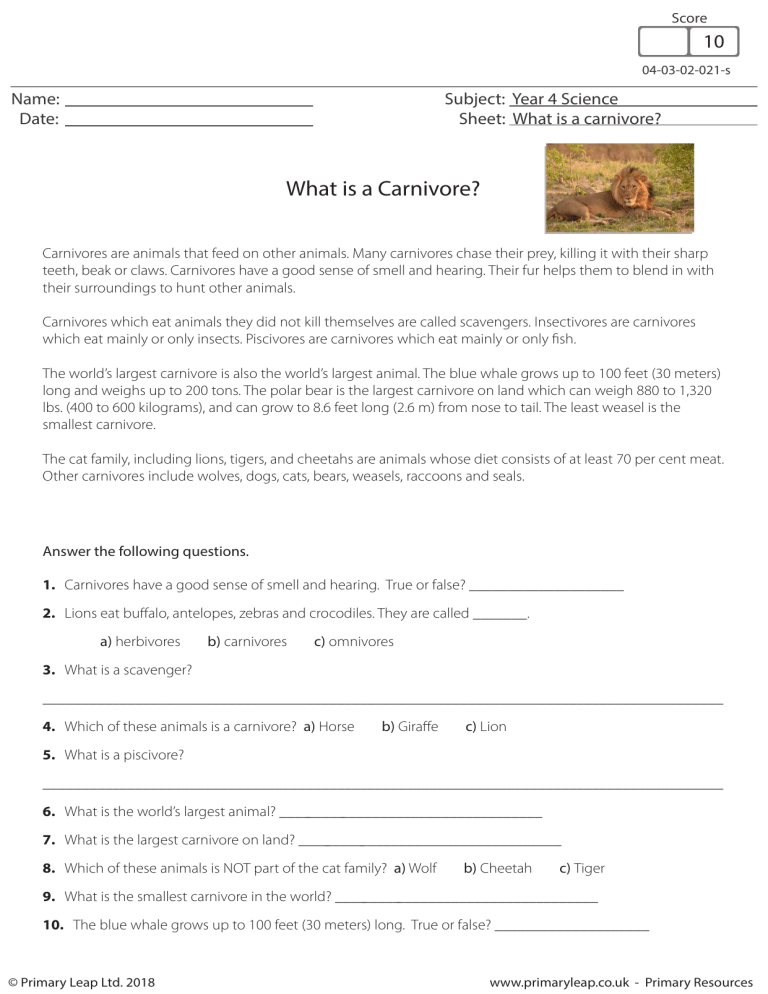
Score 10 04-03-02-021-s Name: Date: Subject: Year 4 Science Sheet: What is a carnivore? What is a Carnivore? Carnivores are animals that feed on other animals. Many carnivores chase their prey, killing it with their sharp teeth, beak or claws. Carnivores have a good sense of smell and hearing. Their fur helps them to blend in with their surroundings to hunt other animals. Carnivores which eat animals they did not kill themselves are called scavengers. Insectivores are carnivores which eat mainly or only insects. Piscivores are carnivores which eat mainly or only fish. The world’s largest carnivore is also the world’s largest animal. The blue whale grows up to 100 feet (30 meters) long and weighs up to 200 tons. The polar bear is the largest carnivore on land which can weigh 880 to 1,320 lbs. (400 to 600 kilograms), and can grow to 8.6 feet long (2.6 m) from nose to tail. The least weasel is the smallest carnivore. The cat family, including lions, tigers, and cheetahs are animals whose diet consists of at least 70 per cent meat. Other carnivores include wolves, dogs, cats, bears, weasels, raccoons and seals. Answer the following questions. 1. Carnivores have a good sense of smell and hearing. True or false? ____________________ 2. Lions eat buffalo, antelopes, zebras and crocodiles. They are called _______. a) herbivores b) carnivores c) omnivores 3. What is a scavenger? ________________________________________________________________________________________ 4. Which of these animals is a carnivore? a) Horse b) Giraffe c) Lion 5. What is a piscivore? ________________________________________________________________________________________ 6. What is the world’s largest animal? ___________________________________ 7. What is the largest carnivore on land? ___________________________________ 8. Which of these animals is NOT part of the cat family? a) Wolf b) Cheetah c) Tiger 9. What is the smallest carnivore in the world? ___________________________________ 10. The blue whale grows up to 100 feet (30 meters) long. True or false? ____________________ © Primary Leap Ltd. 2018 www.primaryleap.co.uk - Primary Resources
